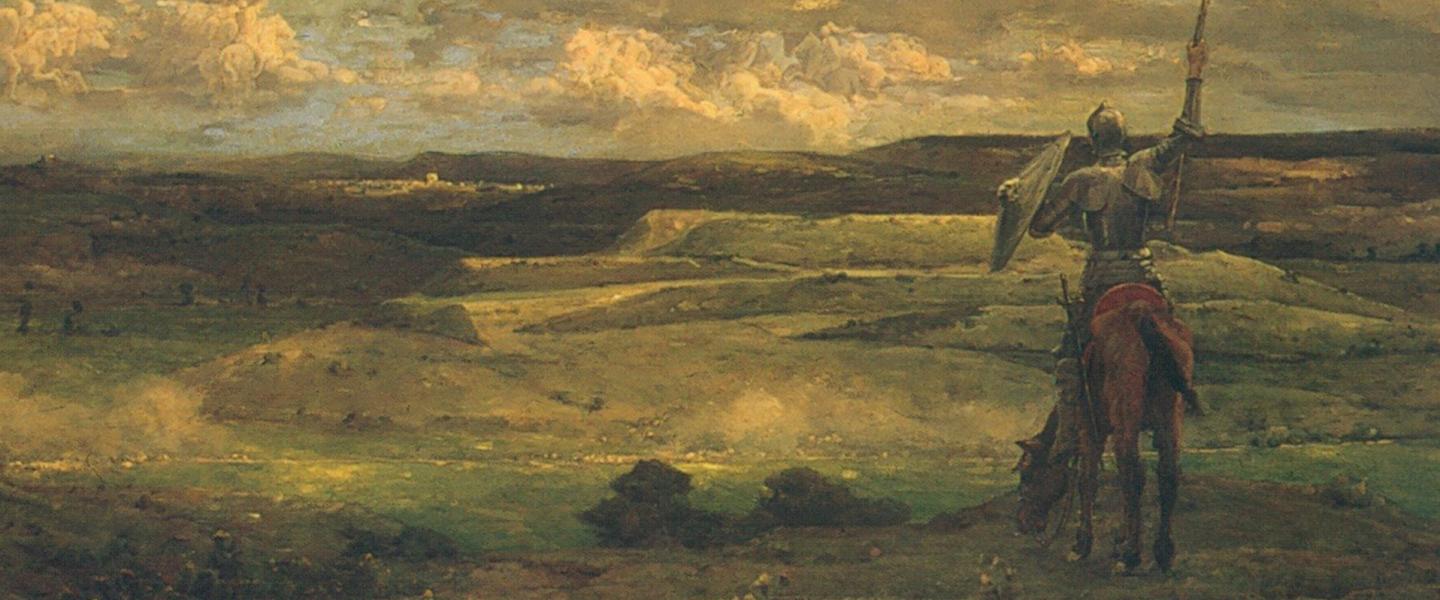Literature


Excerpt from Don Quixote
A favorite in Lit Hum, Don Quixote, has been on and off the syllabus for a total of over seventy years.
"Just then, they discovered thirty or forty windmills in that plain. And as soon as don Quixote saw them, he said to his squire: “Fortune is guiding our affairs better than we could have ever hoped. Look over there, Sancho Panza, my friend, where there are thirty or more monstrous giants with whom I plan to do battle and take all their lives, and with their spoils we’ll start to get rich. This is righteous warfare, and it’s a great service to God to rid the earth of such a wicked seed.”
“What giants?” said Sancho Panza.
“Those that you see over there,” responded his master, “with the long arms—some of them almost two leagues long.”
“Look, your grace,” responded Sancho, “what you see over there aren’t giants—they’re windmills; and what seems to be arms are the sails that rotate the millstone when they’re turned by the wind.”
“It seems to me,” responded don Quixote, “that you aren’t well-versed in adventures—they are giants; and if you’re afraid, get away from here and start praying while I go into fierce and unequal battle with them.”
And saying this, he spurred his horse Rocinante without heeding what his squire Sancho was shouting to him, that he was attacking windmills and not giants. But he was so certain they were giants that he paid no attention to his squire Sancho’s shouts, nor did he see what they were, even though he was very close. Rather, he went on shouting: “Do not flee, cowards and vile creatures, for it’s just one knight attacking you!”
At this point, the wind increased a bit and the large sails began to move, which don Quixote observed and said: “Even though you wave more arms than Briaræus, you’ll have to answer to me.”
When he said this—and commending himself with all his heart to his lady Dulcinea, asking her to aid him in that peril, well-covered by his shield, with his lance on the lance rest —he attacked at Rocinante’s full gallop and assailed the first windmill he came to. He gave a thrust into the sail with his lance just as a rush of air accelerated it with such fury that it broke the lance to bits, taking the horse and knight with it, and tossed him rolling onto the ground, very battered.
Sancho went as fast as his donkey could take him to help his master, and when he got there, he saw that don Quixote couldn’t stir—such was the result of Rocinante’s landing on top of him. “God help us,” said Sancho. “Didn’t I tell you to watch what you were doing; that they were just windmills, and that only a person who had windmills in his head could fail to realize it?”
“Keep still, Sancho, my friend,” responded don Quixote. “Things associated with war, more than others, are subject to continual change. Moreover, I believe—and it’s true—that the sage Frestón—he who robbed me of my library—has changed these giants into windmills to take away the glory of my having conquered them, such is the enmity he bears me. But in the long run, his evil cunning will have little power over the might of my sword.”
“God’s will be done,” responded Sancho Panza."

An ink on paper drawing of Don Quixote made by Salvador Dalí in 1945.

Please log in to comment.